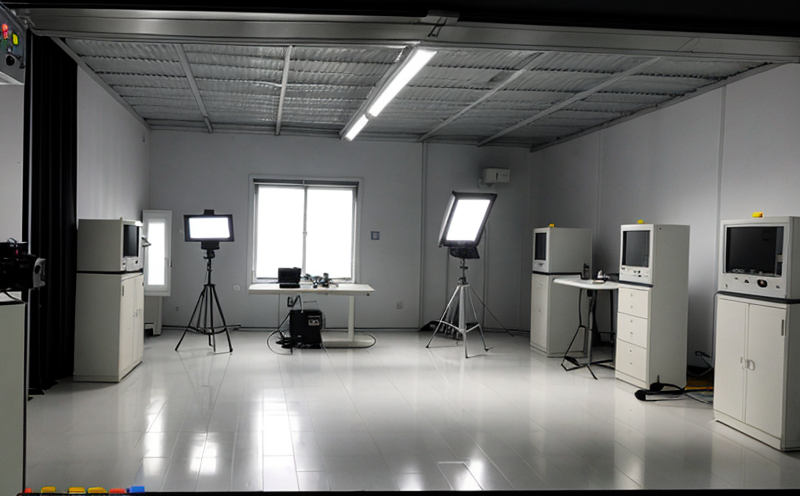CIE 177 Colour Rendering and Photometric Testing of Light Sources
The CIE 177 standard is an essential tool in evaluating the quality of light sources, especially those used for visual tasks such as reading, working with digital devices, or even aesthetic applications. This test evaluates both the photometric properties and color rendering index (CRI) of a light source to ensure it meets industry standards and user expectations.
Photometry measures the perceived effect of light on human vision. It is crucial for ensuring that a light source produces the desired brightness and distribution. On the other hand, CRI assesses how well colors appear under a given light source compared to an ideal reference illuminant. Both parameters are critical in optimizing lighting design for specific environments.
Understanding the test process involves knowing the equipment used, the specimens tested, and the standards applied. The test requires specialized instrumentation including photometers and colorimeters capable of measuring luminous flux distribution and chromaticity coordinates over a defined area. Specimens are typically light-emitting diodes (LEDs), incandescent lamps, or any other type of lighting fixture.
The CIE 177 protocol involves illuminating the specimen with standard reference illuminants and measuring the resultant light output. The measurements include luminous flux in lumens for photometric testing and chromaticity coordinates for color rendering index. After collecting these data points, they are compared against established benchmarks to determine compliance.
The importance of this test cannot be overstated, especially in sectors like retail, healthcare, and office environments where lighting conditions significantly impact productivity and well-being. In retail, optimal color rendering ensures accurate product display, enhancing customer satisfaction. For healthcare settings, appropriate photometric properties are vital for patient care and staff comfort.
In the realm of R&D, CIE 177 testing is indispensable for developing new light sources that meet market demands while adhering to environmental regulations. Compliance officers also rely on this test to ensure products comply with industry standards, thus avoiding potential legal issues and maintaining a positive brand image.
Given its significance, it's essential to choose a reputable laboratory capable of performing CIE 177 testing accurately. Our state-of-the-art facilities and experienced personnel guarantee reliable results every time. We employ the latest technology and adhere strictly to international standards like ISO and IEC, ensuring precision and consistency in our findings.
Scope and Methodology
| Parameter | Description |
|---|---|
| Luminous Flux Measurement | Determination of the total amount of visible light emitted by a source. |
| CIE 177 Standard Reference Illuminants | Use of standard illuminants to provide consistent reference points for measurement. |
| Color Rendering Index (CRI) | Evaluation of the ability of a light source to render colors accurately compared to a reference source. |
| Luminous Intensity Distribution | Detailed assessment of how brightness varies across different angles around the light source. |
| Testing Environment | Description |
|---|---|
| Laboratory Lighting Conditions | Controlled environment to minimize external variables affecting test results. |
| Measurement Equipment Calibration | Regular calibration of photometers and colorimeters to ensure accuracy. |
| Data Analysis Software | Use of advanced software for processing collected data points into meaningful metrics. |
Why Choose This Test
Choosing CIE 177 testing is crucial for several reasons. Firstly, it ensures that the light source meets stringent international standards, enhancing its marketability and compliance with regulations. Secondly, this test provides insights into how a light source will perform in real-world applications, allowing manufacturers to optimize their designs.
Thirdly, CIE 177 testing helps identify potential issues early on during product development, saving time and resources by eliminating problematic prototypes before mass production. Fourthly, it offers a competitive edge by ensuring superior lighting performance that can differentiate products in the market.
In addition to these benefits, this test fosters innovation within R&D teams by providing detailed data for further research and development efforts. It also aids procurement officers in selecting suppliers who consistently deliver high-quality light sources meeting specified criteria.
Ultimately, CIE 177 testing is an indispensable tool for ensuring the quality of light sources across various industries. By investing in this service, businesses can improve user experience, enhance product performance, and maintain a strong brand reputation.
International Acceptance and Recognition
The CIE 177 standard has gained widespread acceptance globally due to its rigorous approach to evaluating light sources. Compliance with this standard is recognized by numerous international organizations, including ISO and IEC.
Numerous countries have adopted the CIE 177 protocol as a national standard for testing light sources. This recognition ensures that manufacturers can easily comply with local regulations while meeting global standards simultaneously.
Adhering to this test provides several advantages beyond mere compliance. It demonstrates commitment to quality, which is highly valued by consumers and industry partners alike. Additionally, it opens up new market opportunities in regions where the standard is widely accepted.
The CIE 177 protocol has been endorsed by leading lighting manufacturers worldwide who recognize its value in ensuring consistent product performance across different markets. By implementing this test, businesses can tap into these international markets confidently knowing their products meet all necessary requirements.
In conclusion, choosing to perform CIE 177 testing not only ensures compliance but also enhances brand reputation and opens doors to new market opportunities. It is a testament to the commitment to delivering high-quality lighting solutions that meet both local and global standards.





